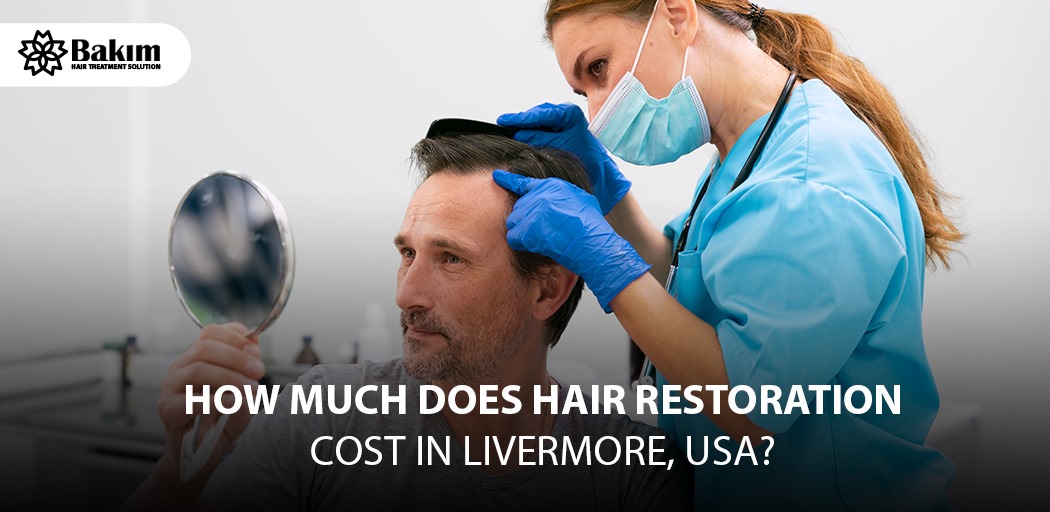Hair loss is a growing concern for many people, affecting both men and women across the globe. In Livermore, USA, the demand for hair restoration treatments has significantly increased as more individuals seek effective solutions to regain their confidence. But how much does hair restoration cost in Livermore, and what factors influence these costs? Let’s delve into the details to understand the financial aspects of this transformative procedure.
What is Hair Restoration?
Hair restoration encompasses a range of medical and surgical treatments designed to combat hair loss and stimulate new hair growth. These procedures can vary widely in terms of technique, cost, and effectiveness.
Types of Hair Restoration Techniques
There are several hair restoration techniques available, including:
- Follicular Unit Transplantation (FUT)
- Follicular Unit Extraction (FUE)
- Robotic Hair Transplantation
- Platelet-Rich Plasma (PRP) Therapy
- Laser Therapy
Each method has its unique benefits and costs, which we’ll explore in more detail.
Factors Influencing Hair Restoration Costs
Type of Procedure
The specific type of hair restoration procedure chosen plays a significant role in the overall cost. Surgical options like FUT and FUE tend to be more expensive than non-surgical treatments such as PRP and laser therapy.
Extent of Hair Loss
The degree of hair loss also affects the cost. More extensive hair loss requires more grafts or treatment sessions, increasing the overall price.
Clinic Reputation and Location
Clinics with a strong reputation for successful outcomes may charge higher fees. Additionally, the location of the clinic can influence costs, with prices varying between cities and regions.
Surgeon’s Experience
Highly experienced and reputable surgeons often command higher fees due to their expertise and track record of successful procedures.
Cost Breakdown of Hair Restoration Techniques
Follicular Unit Transplantation (FUT)
FUT involves removing a strip of scalp from the donor area and dissecting it into individual grafts. The cost can range from $4,000 to $15,000 depending on the number of grafts required.
Follicular Unit Extraction (FUE)
FUE is a more advanced technique where individual hair follicles are extracted and transplanted. This method typically costs between $5,000 and $20,000.
Robotic Hair Transplantation
Robotic hair transplantation uses advanced technology to assist with the procedure, offering precision and efficiency. Costs can range from $8,000 to $25,000.
PRP Therapy
PRP therapy involves injecting platelet-rich plasma into the scalp to stimulate hair growth. This non-surgical option costs between $500 and $2,000 per session, with multiple sessions often required.
Laser Therapy
Laser therapy uses low-level lasers to stimulate hair growth and costs around $200 to $500 per session.
Average Costs in Livermore, USA
General Price Range
In Livermore, the cost of hair restoration procedures typically falls within the following ranges:
- FUT: $5,000 – $12,000
- FUE: $6,000 – $18,000
- Robotic Hair Transplantation: $9,000 – $22,000
- PRP Therapy: $600 – $1,800 per session
- Laser Therapy: $250 – $450 per session
Comparison with Other Cities
Compared to other cities, Livermore’s prices are relatively moderate. Larger cities like San Francisco or Los Angeles may have higher costs due to increased demand and higher living expenses.
Insurance and Financing Options
Is Hair Restoration Covered by Insurance?
Hair restoration is generally considered a cosmetic procedure and is not covered by insurance. However, there may be exceptions for certain medical conditions.
Financing Plans Available
Many clinics offer financing plans to make hair restoration more affordable. These plans can spread the cost over several months or years, easing the financial burden.
Choosing the Right Clinic in Livermore
Researching Clinics
Thorough research is crucial when selecting a clinic. Look for clinics with positive reviews, experienced surgeons, and a solid track record.
Importance of Consultations
Consultations allow you to discuss your goals, ask questions, and understand the procedure and costs involved. They are an essential step in choosing the right clinic.
Preparing for Hair Restoration
Initial Consultation
During the initial consultation, the surgeon will assess your hair loss, discuss your goals, and recommend the most suitable treatment options.
Pre-Procedure Guidelines
You’ll receive specific guidelines to prepare for the procedure, such as avoiding certain medications and alcohol, and following a healthy diet.
The Hair Restoration Procedure
What to Expect During the Procedure
Hair restoration procedures can vary in duration, typically lasting between 4 to 8 hours. Local anesthesia is used to minimize discomfort.
Duration and Pain Management
The procedure’s duration depends on the technique and the number of grafts needed. Pain is usually minimal, with most patients reporting only mild discomfort.
Post-Procedure Care
Immediate Aftercare
Following the procedure, you’ll receive instructions on how to care for your scalp, including washing techniques and avoiding strenuous activities.
Long-term Care Tips
Long-term care involves maintaining a healthy lifestyle, using prescribed medications, and attending follow-up appointments to monitor progress.
Potential Risks and Complications
Common Side Effects
Common side effects include swelling, redness, and mild pain at the transplant site. These typically subside within a few days.
How to Minimize Risks
Choosing an experienced surgeon and following pre- and post-procedure guidelines can significantly reduce the risk of complications.
Success Rates and Expected Outcomes
Understanding Success Rates
Success rates for hair restoration vary but are generally high when performed by skilled surgeons. FUT and FUE have success rates of around 90-95%.
Realistic Expectations
It’s essential to have realistic expectations. While hair restoration can significantly improve appearance, it may not fully restore your hair to its original density.
Maintaining Results
Lifestyle Changes
Adopting a healthy lifestyle, including a balanced diet and regular exercise, can help maintain the results of hair restoration.
Follow-up Treatments
Periodic follow-up treatments, such as PRP therapy or laser sessions, can enhance and maintain hair growth.
Alternative Solutions to Hair Restoration
Wigs and Hairpieces
Wigs and hairpieces offer a non-surgical solution for hair loss, providing immediate results.
Topical Treatments
Topical treatments like minoxidil can help stimulate hair growth and are often used in conjunction with other treatments.
Dietary Changes
A diet rich in vitamins and minerals essential for hair health can support overall hair growth and reduce hair loss.
Conclusion
Hair restoration in Livermore, USA, offers various options to address hair loss, each with its own cost considerations. By understanding the factors influencing these costs and carefully selecting the right clinic and procedure, you can achieve the desired results and regain your confidence. Remember, hair restoration is an investment in yourself, and with the right approach, it can be a life-changing experience.
FAQ’s
How long does a hair restoration procedure take?
The duration varies depending on the technique and number of grafts but typically ranges from 4 to 8 hours.
Are the results of hair restoration permanent?
Yes, the results are generally permanent, although maintenance treatments may be needed.
What is the recovery time for hair restoration?
Recovery time varies, but most patients can return to normal activities within a week.
Can women undergo hair restoration?
Absolutely! Women can benefit from hair restoration just as much as men.
How soon can I return to work after the procedure?
Most people can return to work within 3 to 5 days after the procedure.


